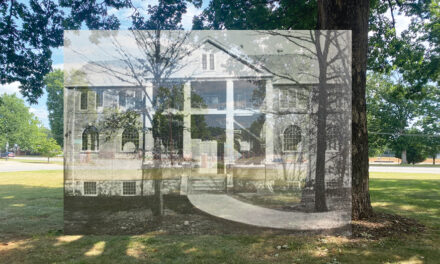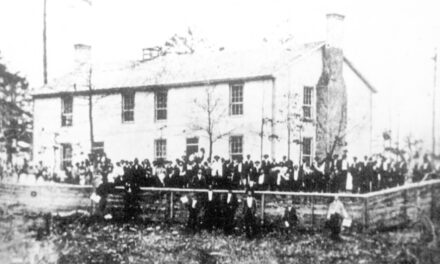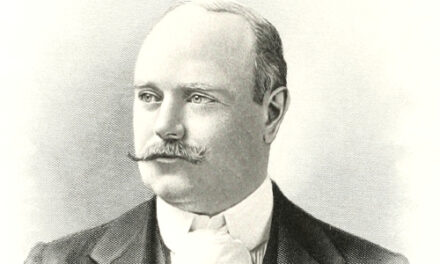
A good part of Hickory’s history has been about competition in the furniture industry. Companies vying with each other for sales, bragging rights between neighboring towns (Morganton, Lenoir, Statesville) for the capital of western manufacturing, but within Hickory another battle brewed.
Once the city established itself as headquarters for the biannual market, two showrooms sought supremacy. Last week, the Hickory Home Furnishings Mart, now the App State Hickory campus was detailed. The building became the outgrowth of a display effort that started with bedsheets dividing a basketball court. In 1963, the City worked with the Furniture Factory Marketing Association to offer an alternative to retailers flocking exclusively to High Point to see the latest. By then, across town, another showroom was already going.
Three years earlier, in the basement of his restaurant, J.P. Mull offered space to manufacturers to lure buyers. While they were in town to see what was available over at the Foundation Center, they could stop off at Mull’s, see other choices and perhaps enjoy a meal at what was one of the best places to eat in Catawba County, located along the bypass, Highway 64/70. They could even spend the night at the motel located there. The same year the Home Furnishings Mart opened, Mull’s son-in-law returned from the United States Navy, where he had been a cryptographer. Lieutenant Leroy Lail was part of what could have been the opening salvos of World War III, since he was on staff for the Cuban Missile Crisis, but when the event passed without escalation, he and his wife Lynn returned and he began to expand the showroom.

Photo: Hickory Furniture Mart, Win-Win, both written by Leroy Lail, and the expanse of Hickory Furniture Mart. What started as 6k feet in a basement has grown.
Without delay, Leroy built the Hickory Furniture Mart into a mammoth complex, taking it out of the basement and expanding with each market. In the months between buyer visits, he added on, taking a 6,000 square foot space into a display venue that eventually totaled 800,000, one construction project after another.
By the 1970s, the Hickory Furniture Mart competed successfully with its crosstown rival. More furniture manufacturers showed their wares with Leroy than at the other showroom. He even started a second location, adjacent to his Holiday Inn at the corner of Lenoir-Rhyne Boulevard and Highway 70. Then came the exodus.
Leroy had his eye on the trend and when manufacturers began their move to High Point in the mid-1980s, he was planning for a slight adaptation. In his book, Win-Win: Lessons Learned in Business and In Life, Leroy details his business philosophy. In it, he expands on the premise, “play the hand you are dealt.” What might have seemed to be a liability, an empty showroom, soon became a strength. Over the course of a few years, he turned the facility from a space open only twice a year for retailers, to a 360-day mecca for retail. Converting Hickory Furniture Mart to an outlet where consumers from all over the world flock to buy furniture in the region where it is made, turned lemons into choice lemonade.
Hickory Furniture Mart has been featured on television, magazines, websites and elsewhere as a location unequaled for selection and price. Whole planeloads of shoppers have come to town to buy. According to Leroy, when Covid hit, folks took to their computer and bought online in the effort to redecorate the space in which they were quarantined. With things back to normal, visitors are again enjoying the “65-80%” discounts in person (as well as online) and the showroom remains perhaps the biggest draw to Hickory, nationwide.
Interesting comparisons can be made between the facilities, with Leroy Lail as a lynchpin between the two. He has always been a strong advocate of education in the region. He served on the Board of Governors for the University System, as well as on the Board of Lenoir-Rhyne University, so the fulfillment of both buildings owes much to his vision for his hometown.
They have gone in different directions, but these days, HFM and AppState Hickory demonstrate the best of adaptive reuse. Progress.








